KS3 and KS4 Proportion Worksheets
Exploring Direct Proportion Using Stacked Number Lines (A)
Year groups: 7, 8
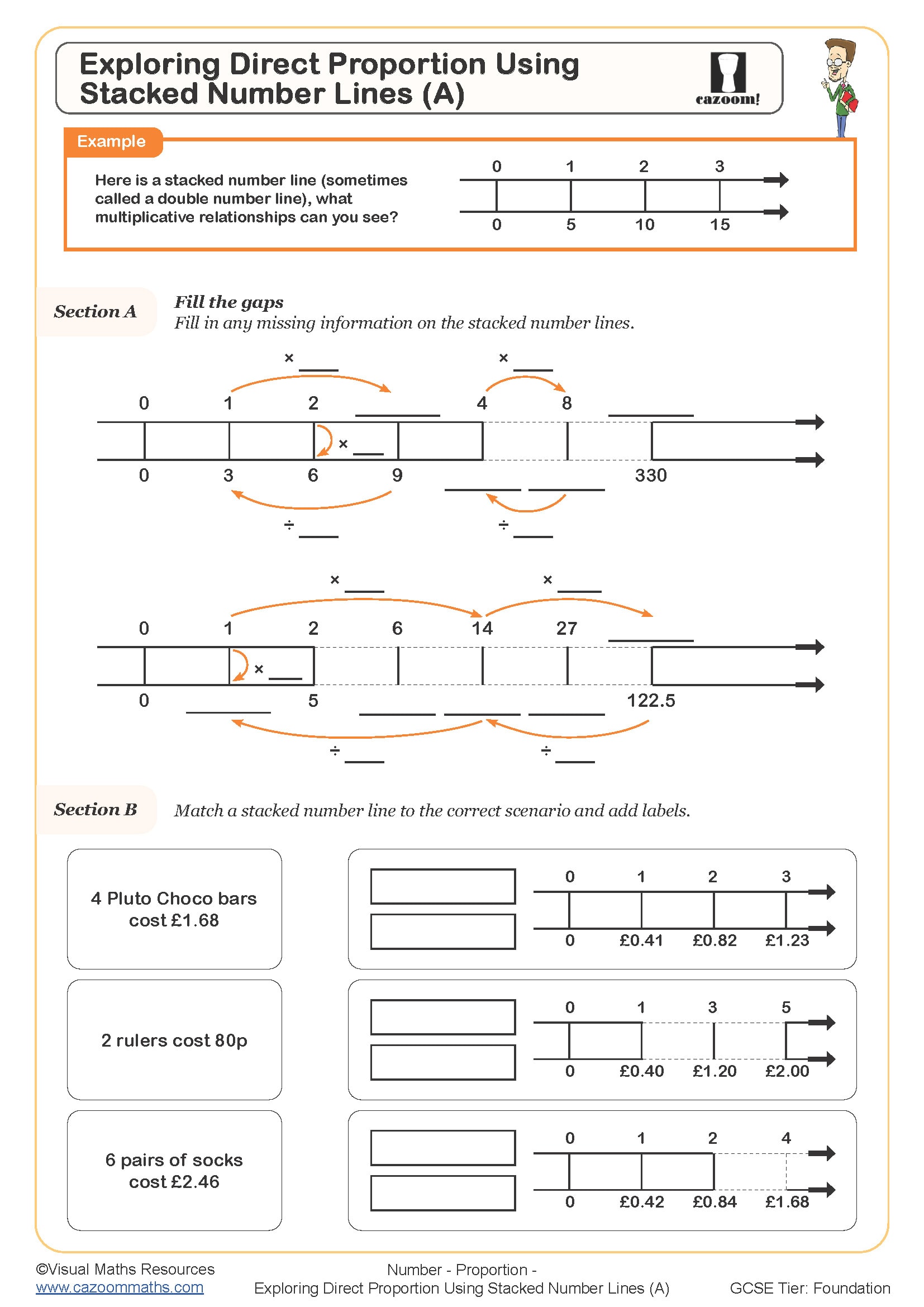
Exploring Direct Proportion Using Stacked Number Lines (B)
Year groups: 7, 8
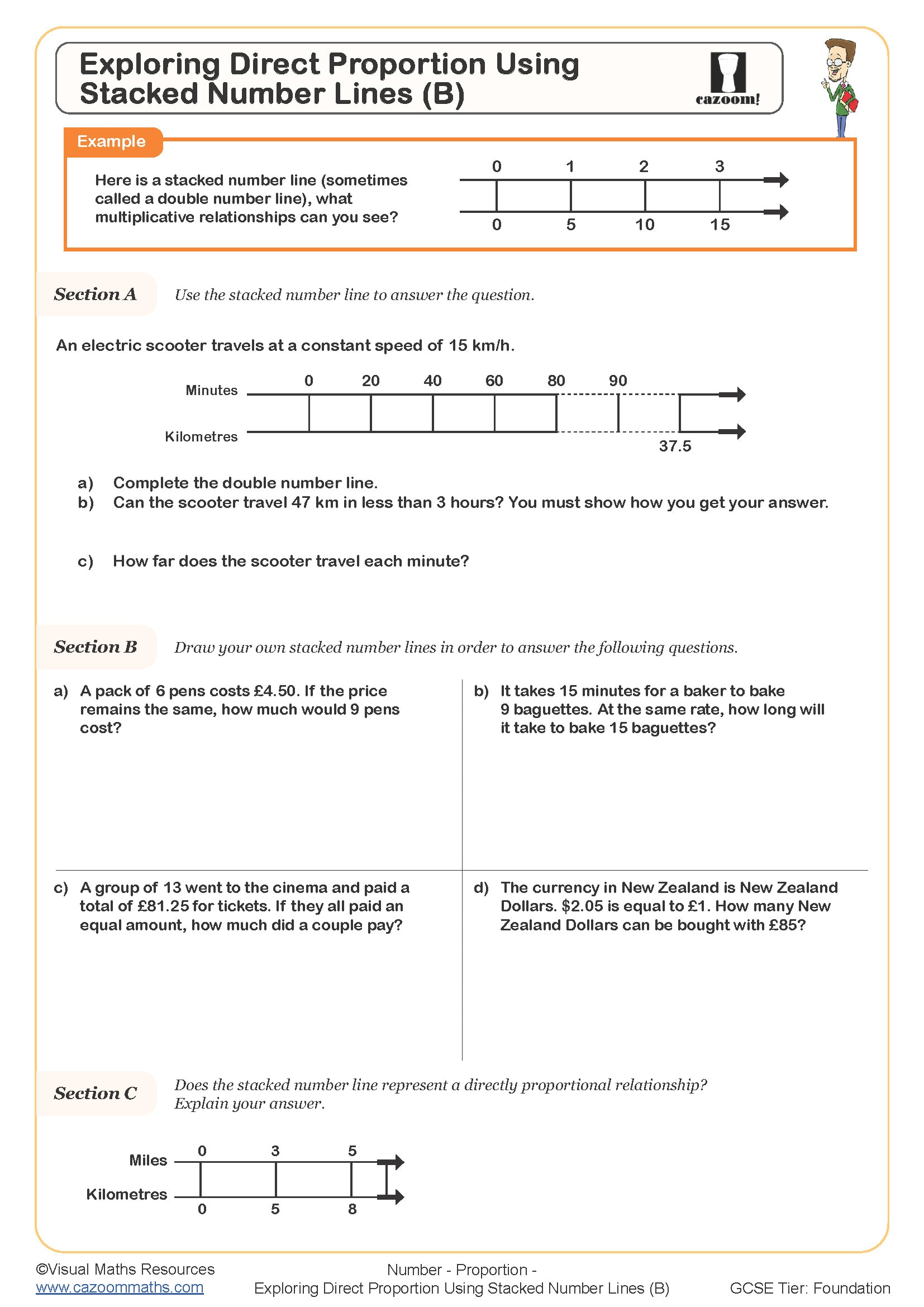
Recipes (A)
Year groups: 7, 8
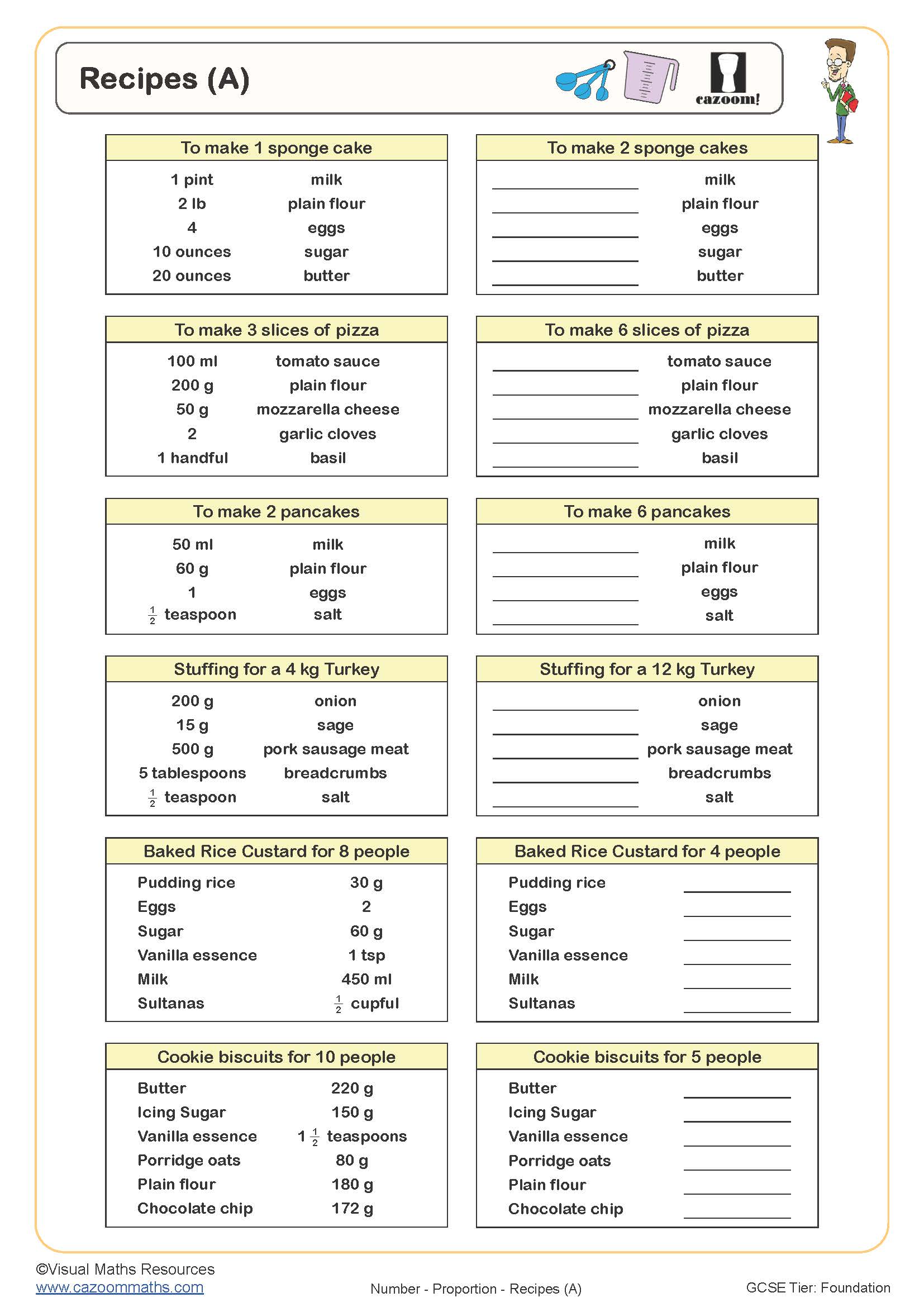
Recipes (B)
Year groups: 7, 8
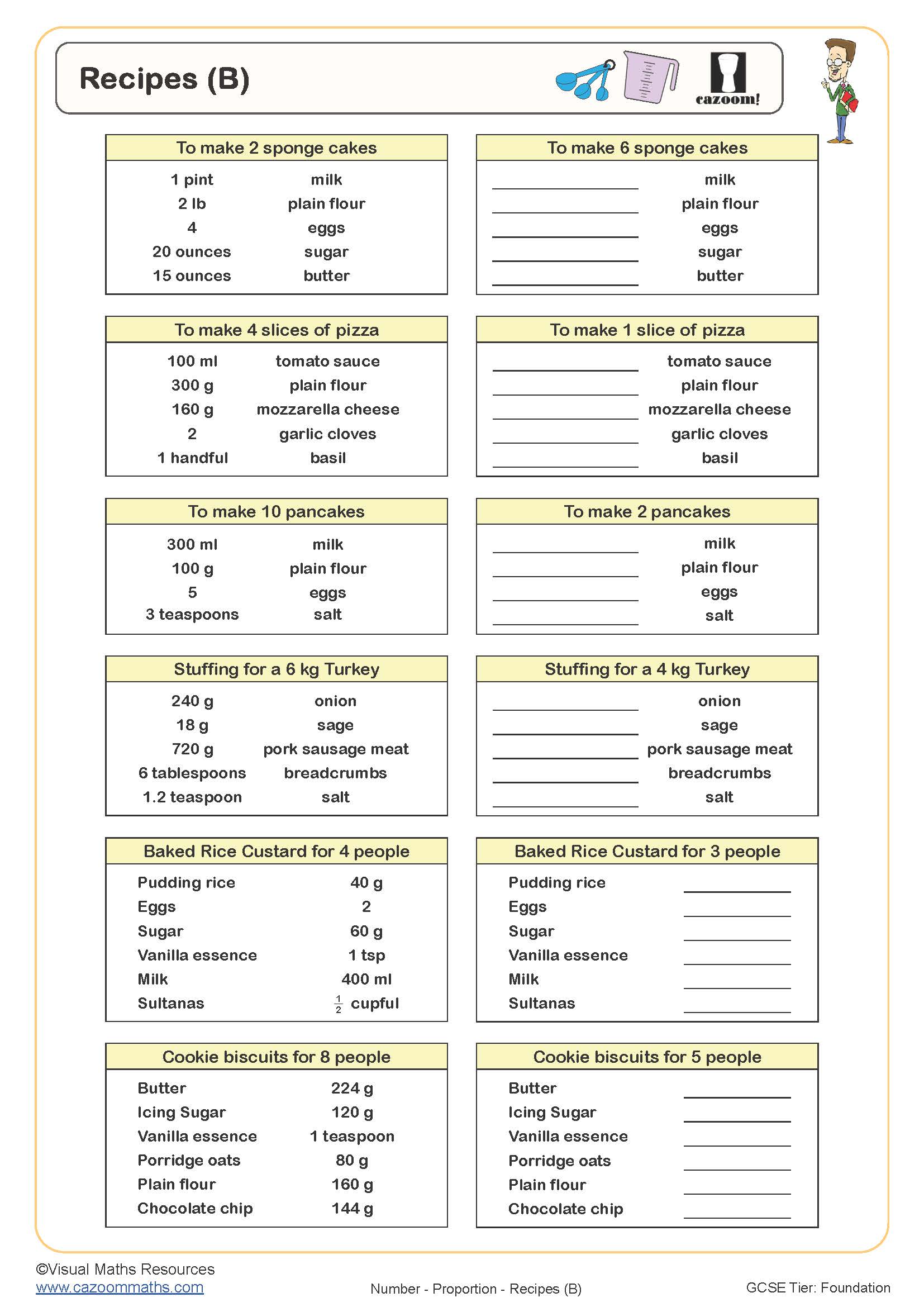
Best Value for Money - the Unitary Method
Year groups: 8, 9

Drawing Conversion Graphs
Year groups: 8, 9
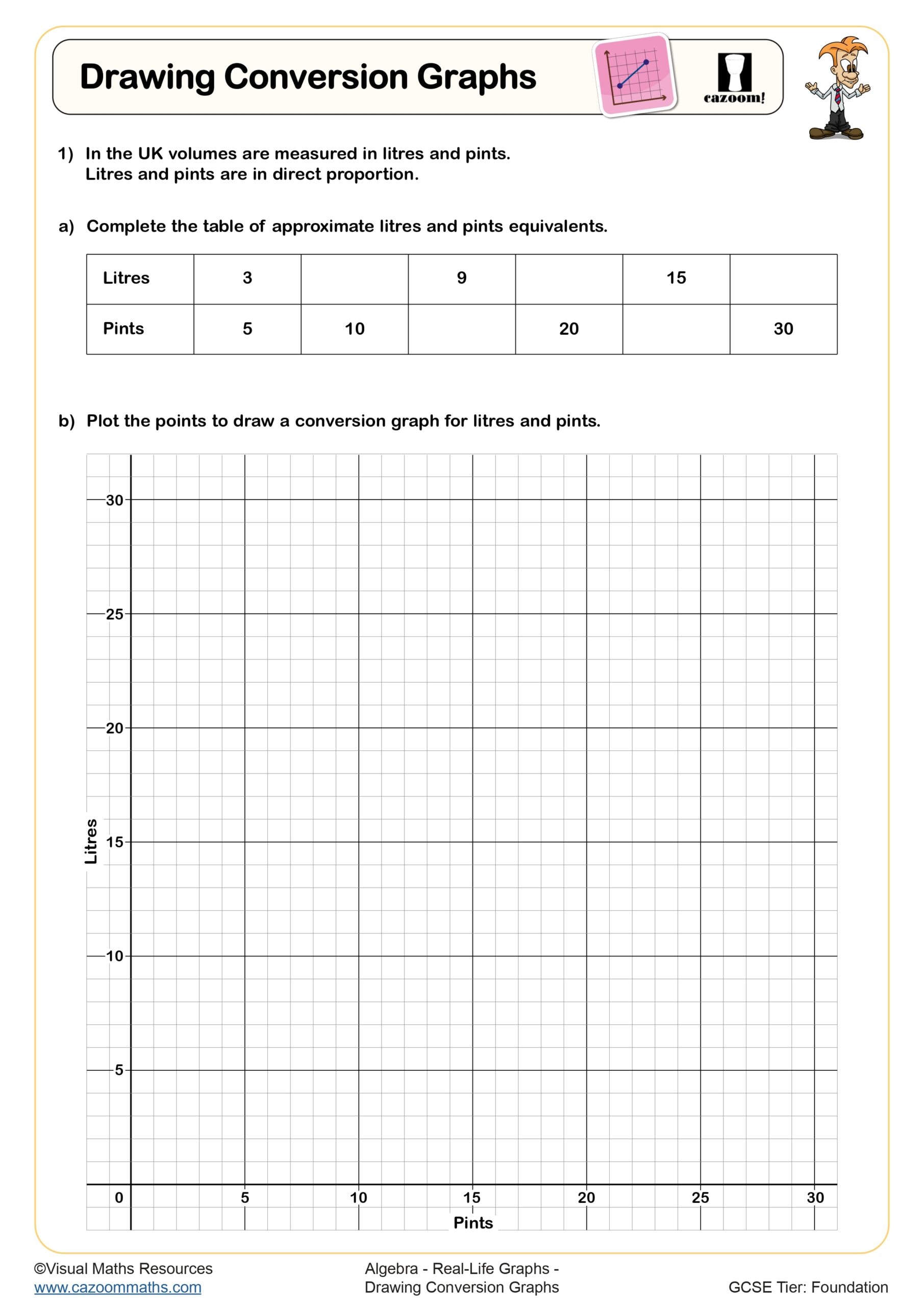
Equations of Proportionality
Year groups: 8, 9
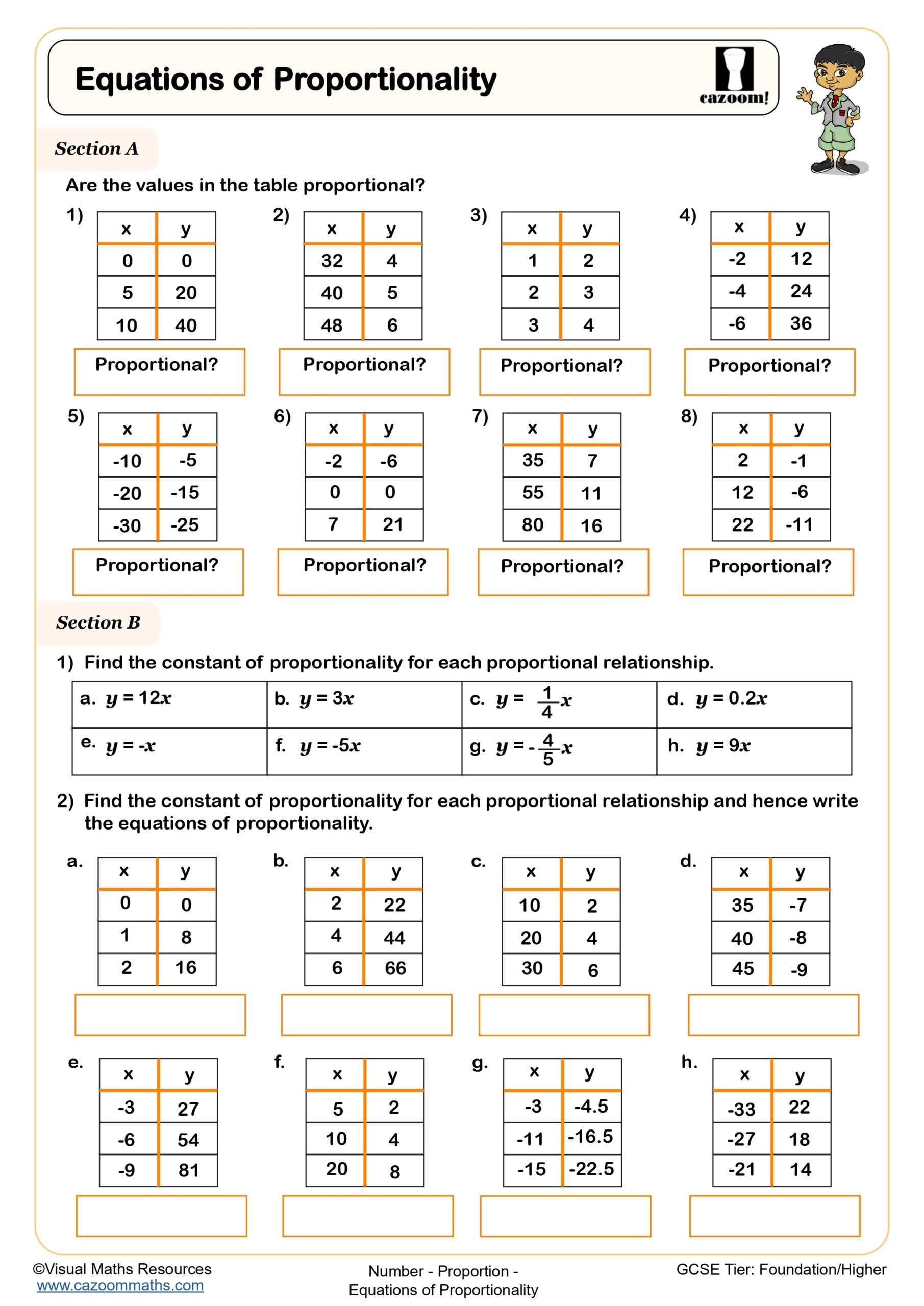
Exchange Rates
Year groups: 8, 9
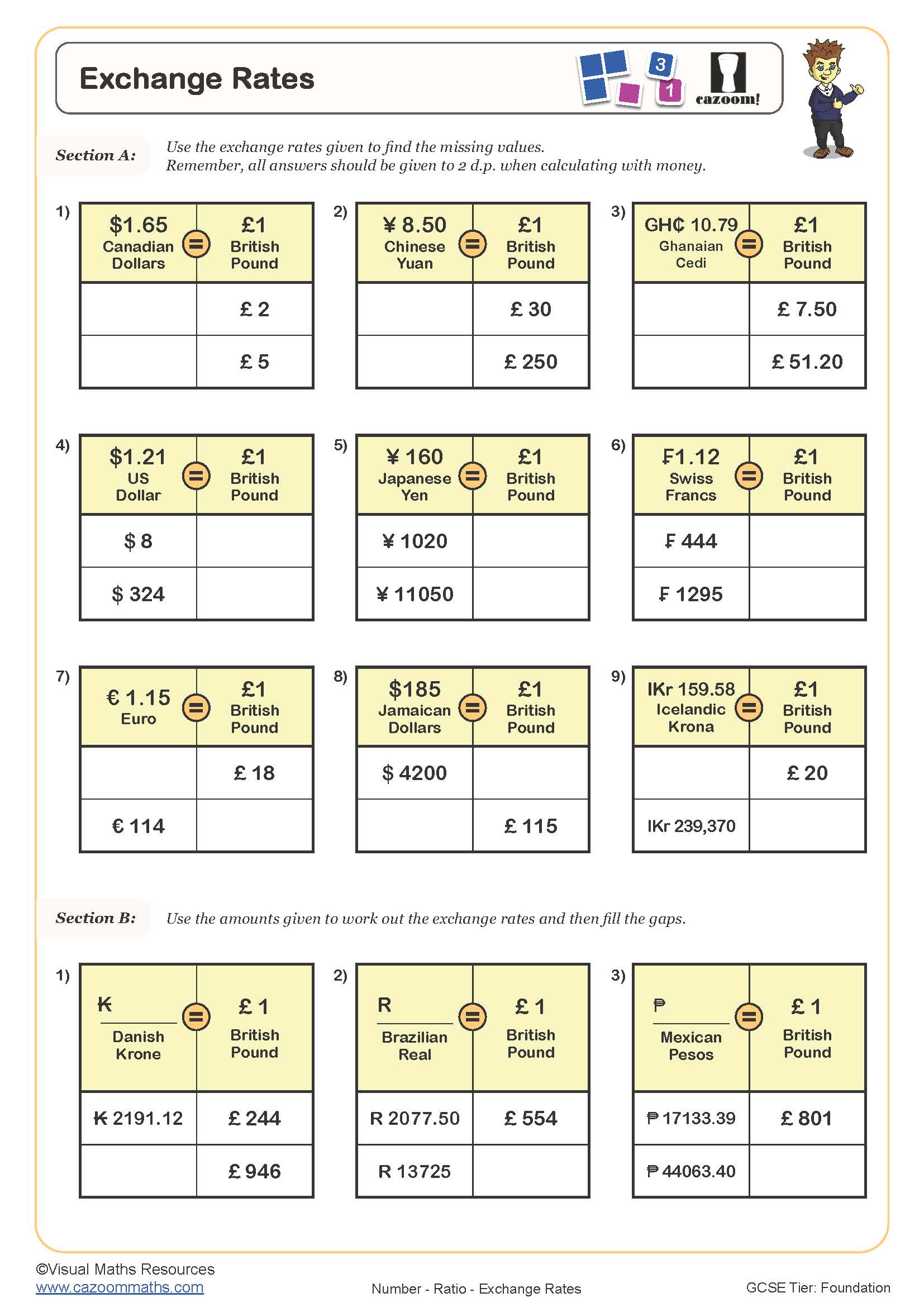
Recipes (C)
Year groups: 8, 9
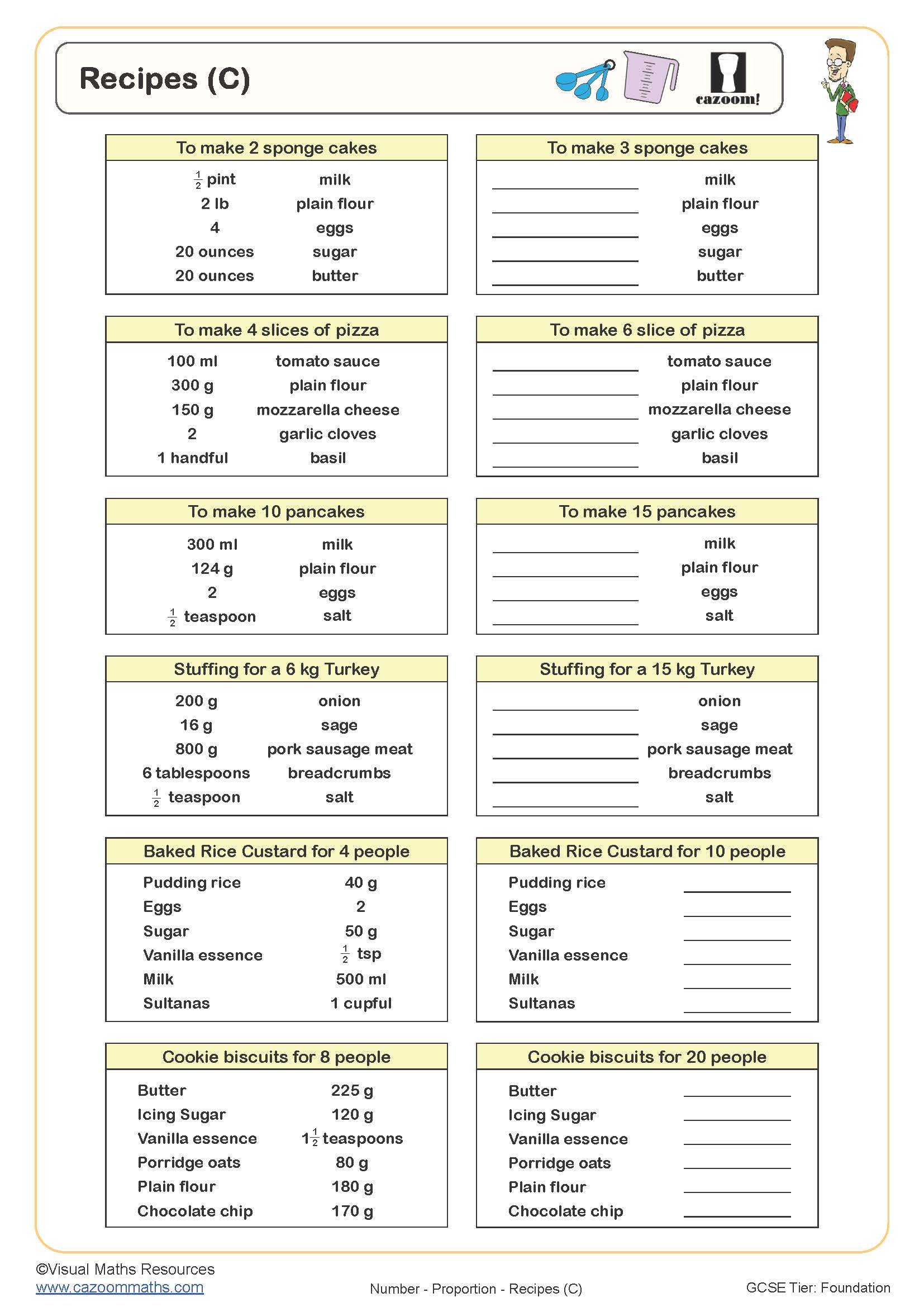
Unit Rates Involving Fractions
Year groups: 8, 9

Using Conversion Graphs
Year groups: 8, 9
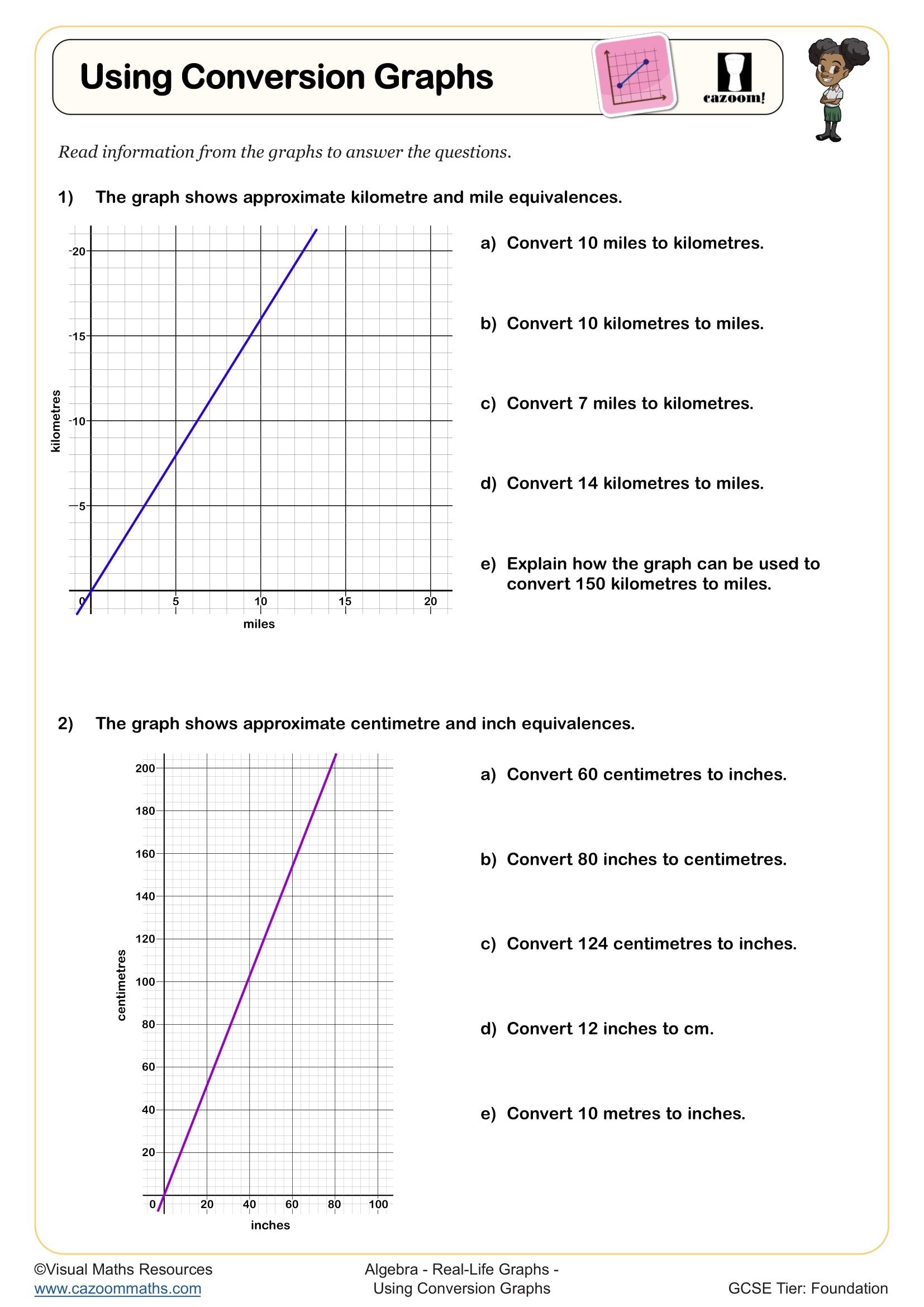
Charge Graphs (A) - Drawing and Interpreting
Year groups: 9, 10
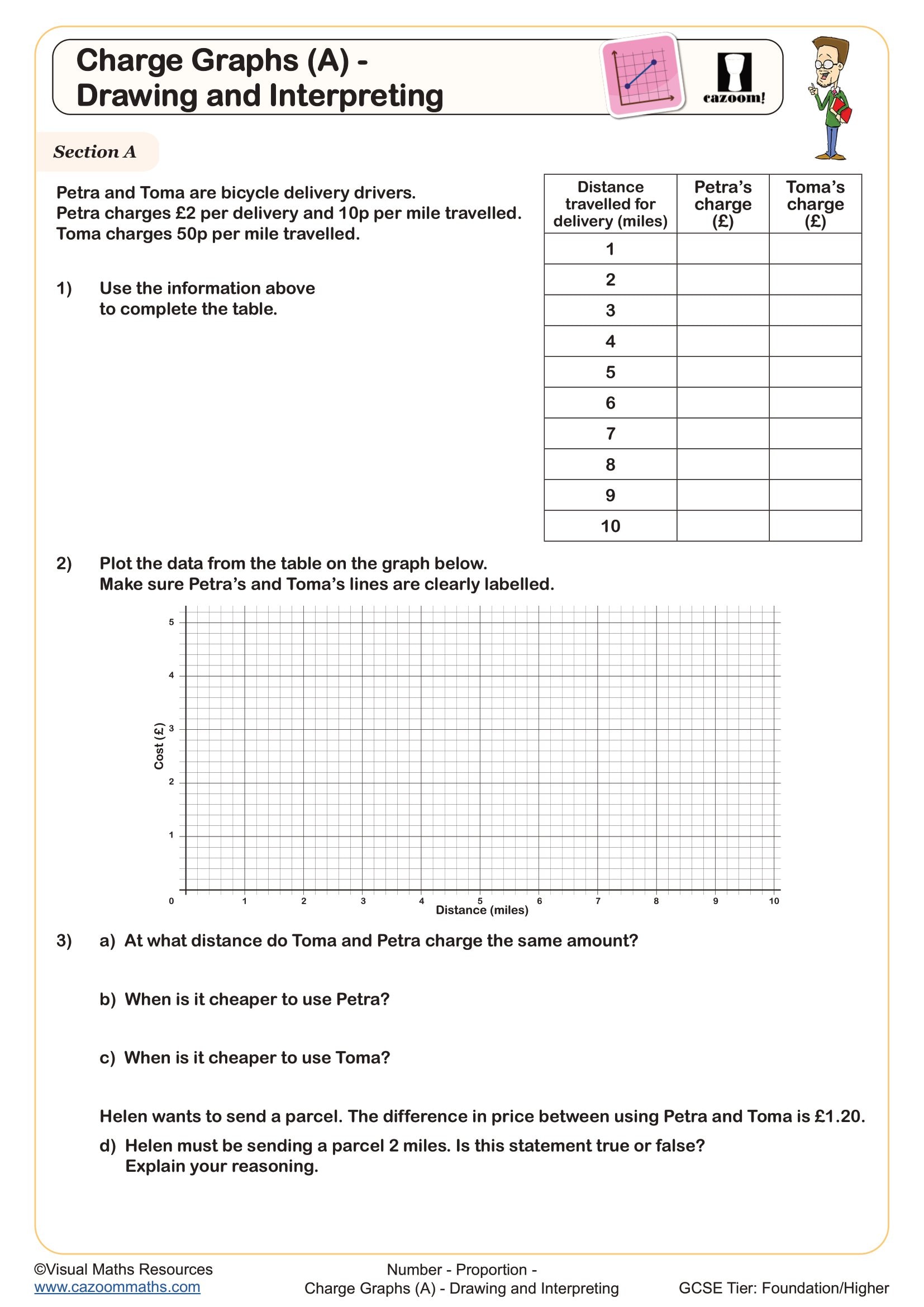
Charge Graphs (B) - Equations
Year groups: 9, 10
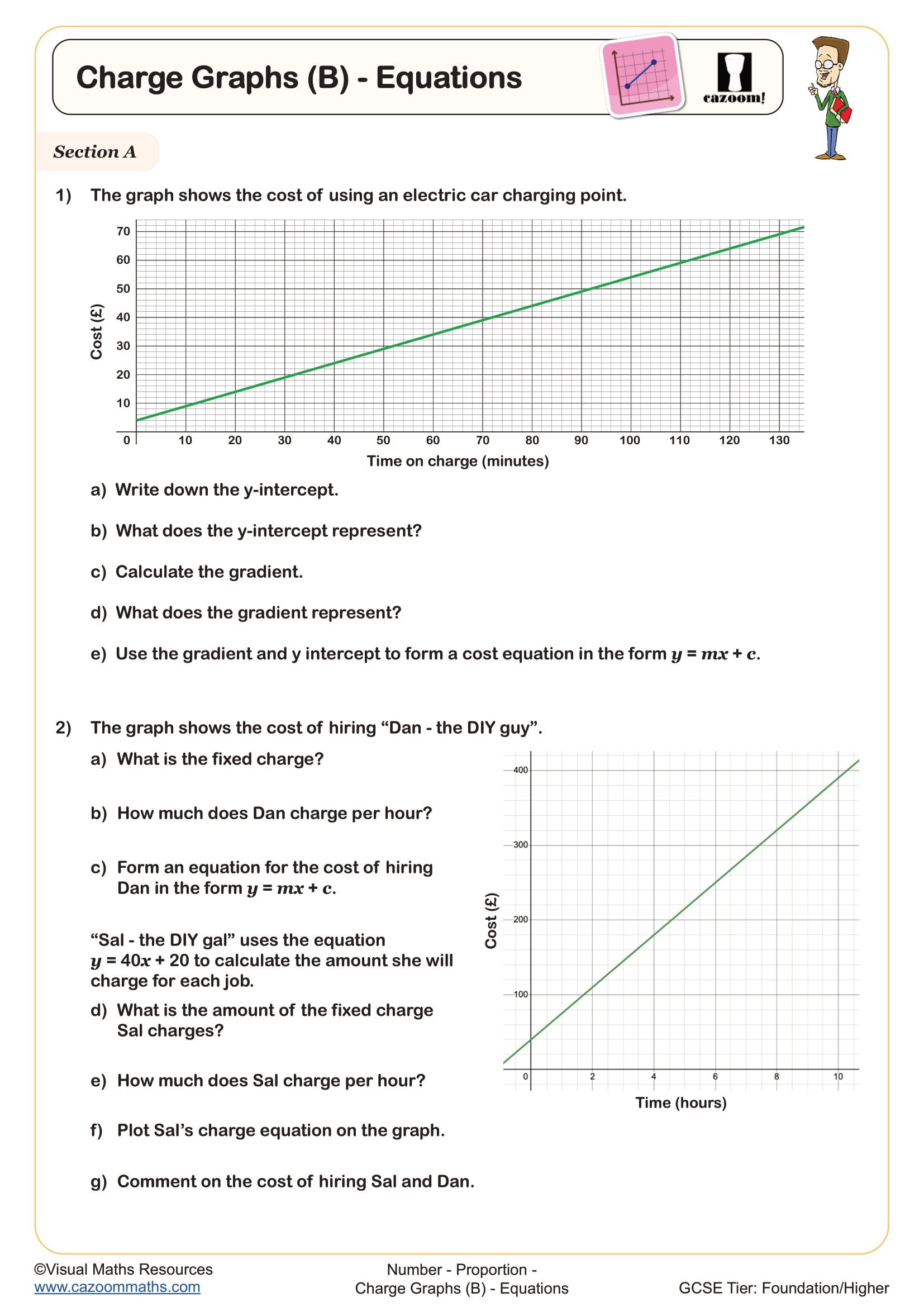
Direct Proportion A
Year groups: 9, 10, 11
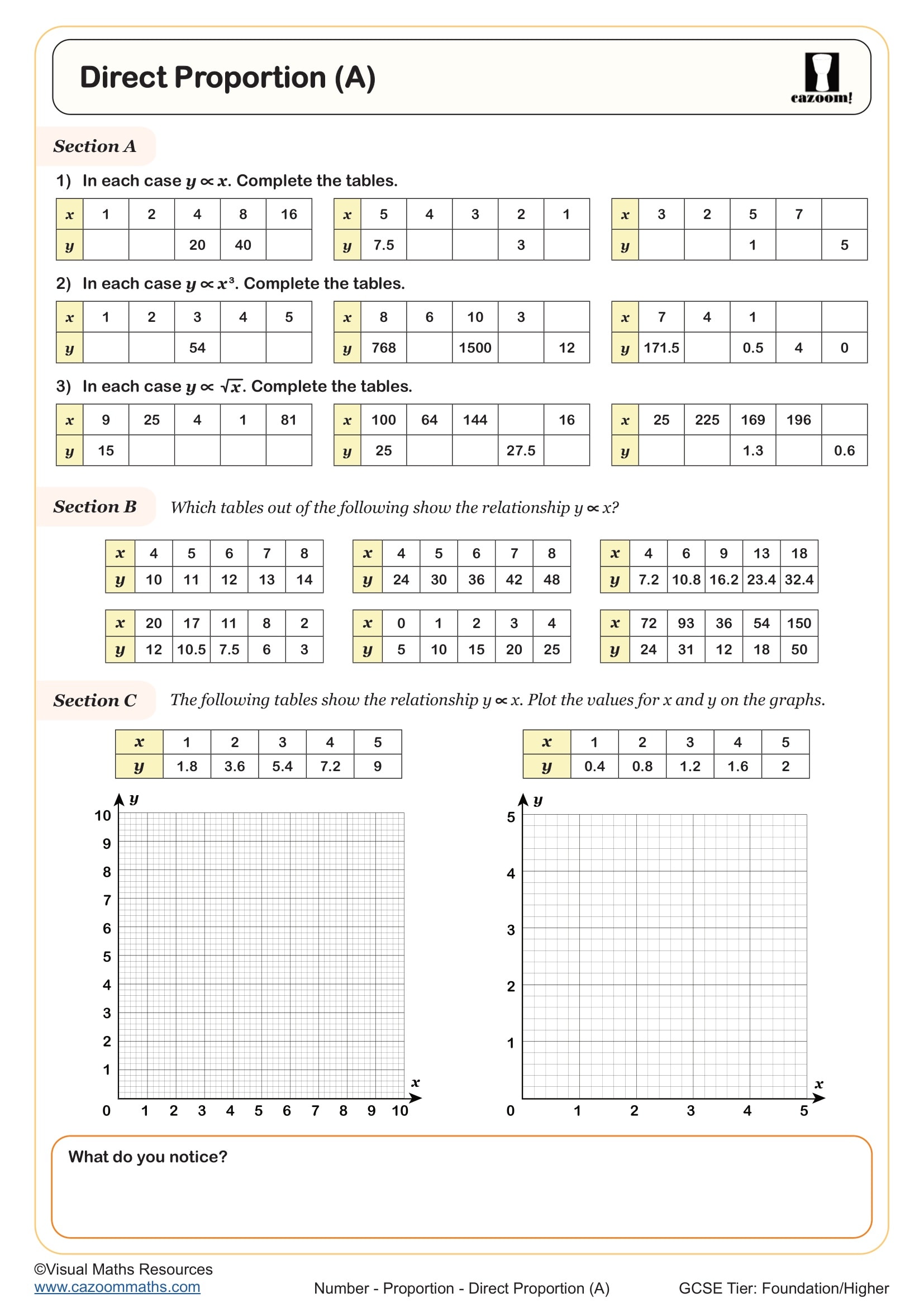
Factory and Worker Proportion Problems
Year groups: 9, 10
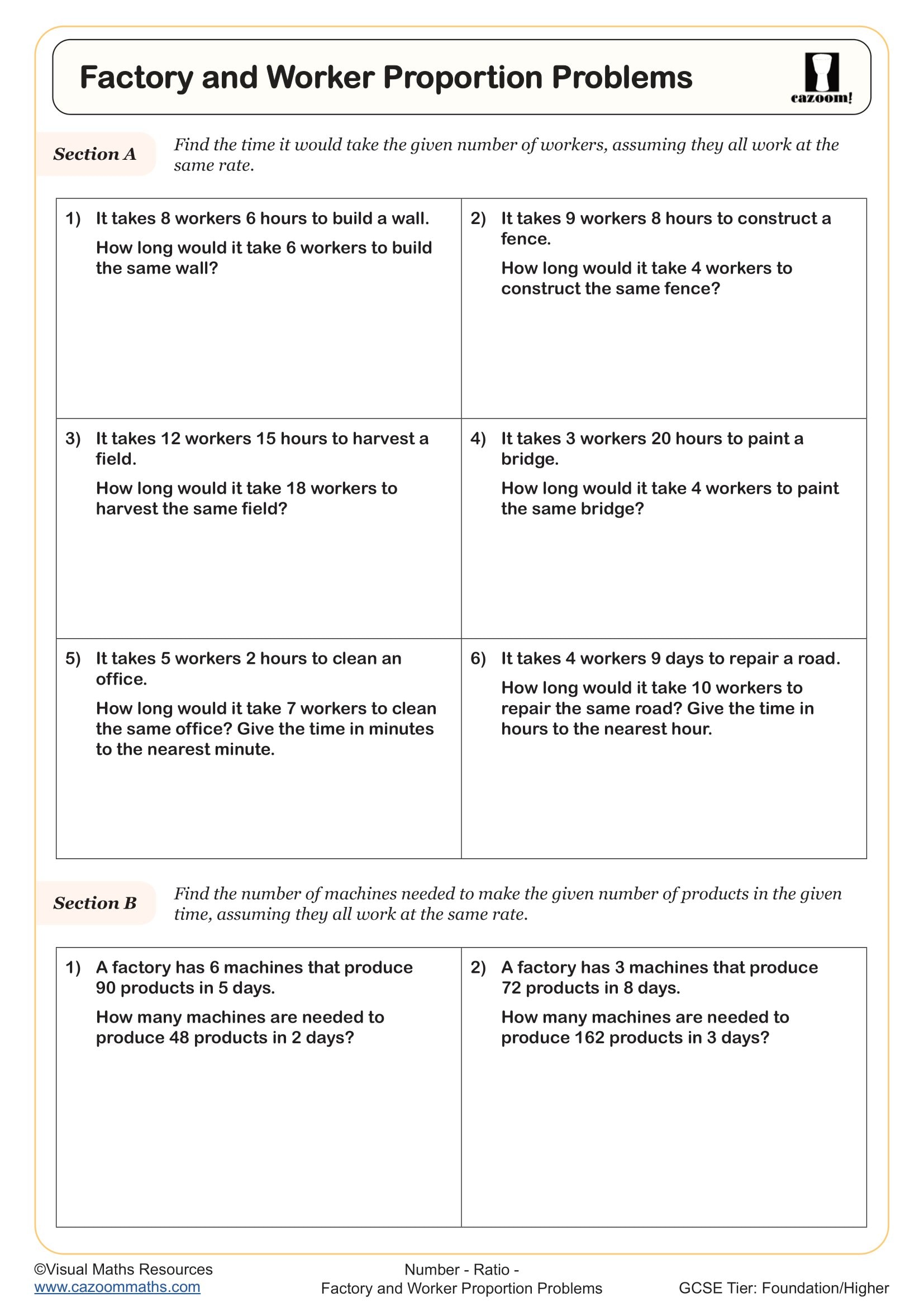
Direct Proportion B
Year groups: 10, 11
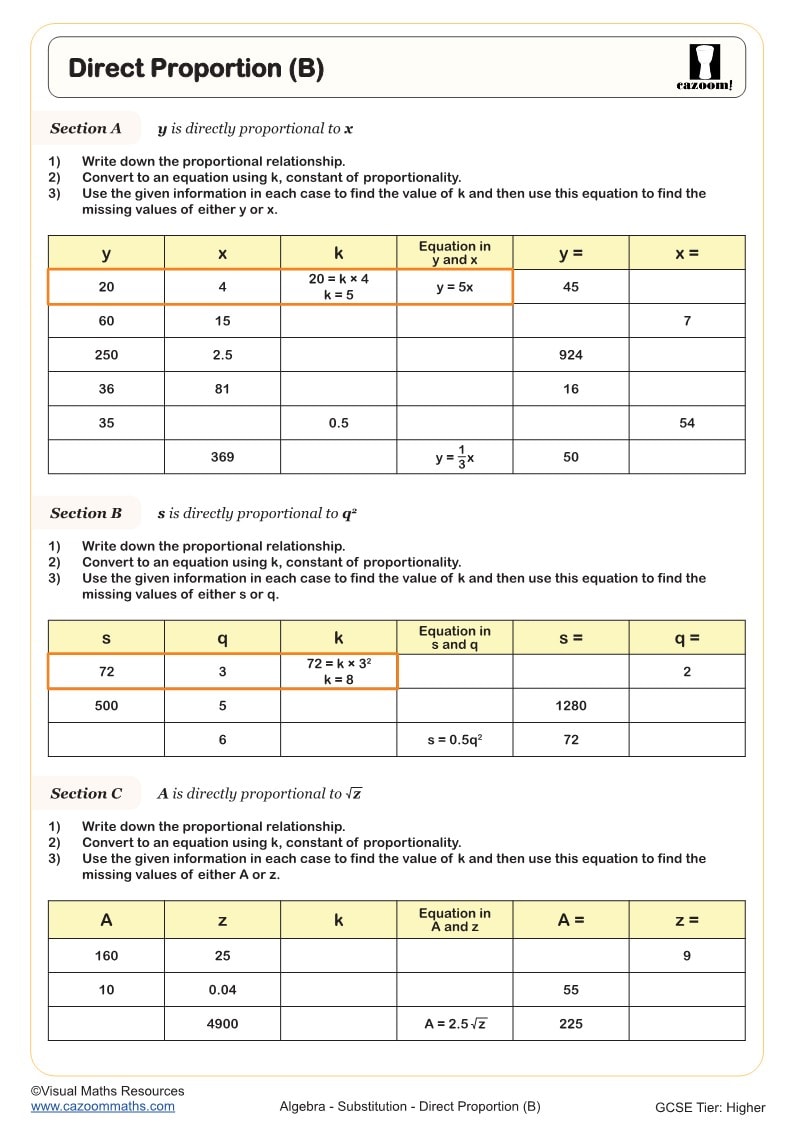
Equations of Proportion - with Three Variables
Year groups: 10, 11
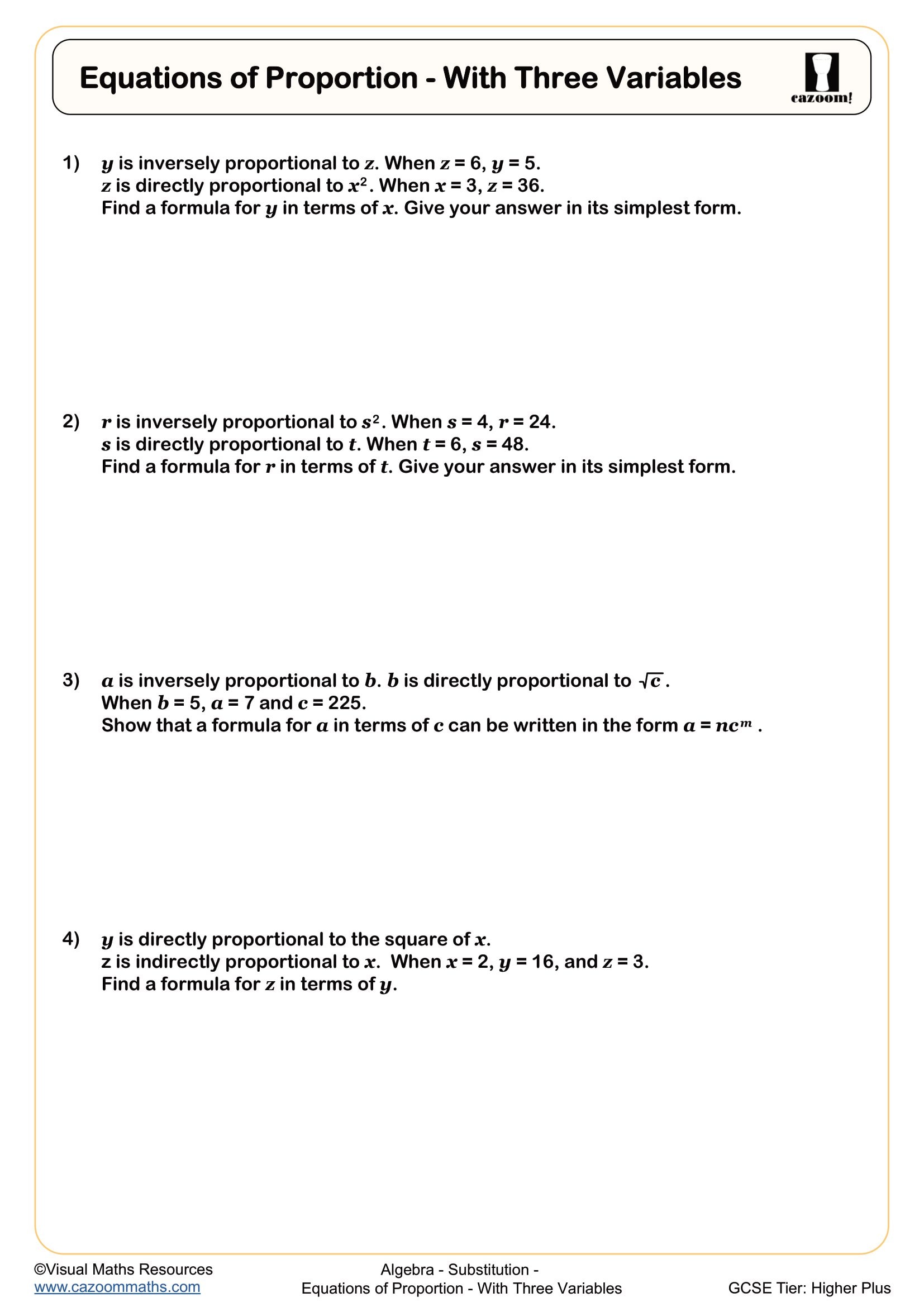
Inverse Proportion
Year groups: 10, 11
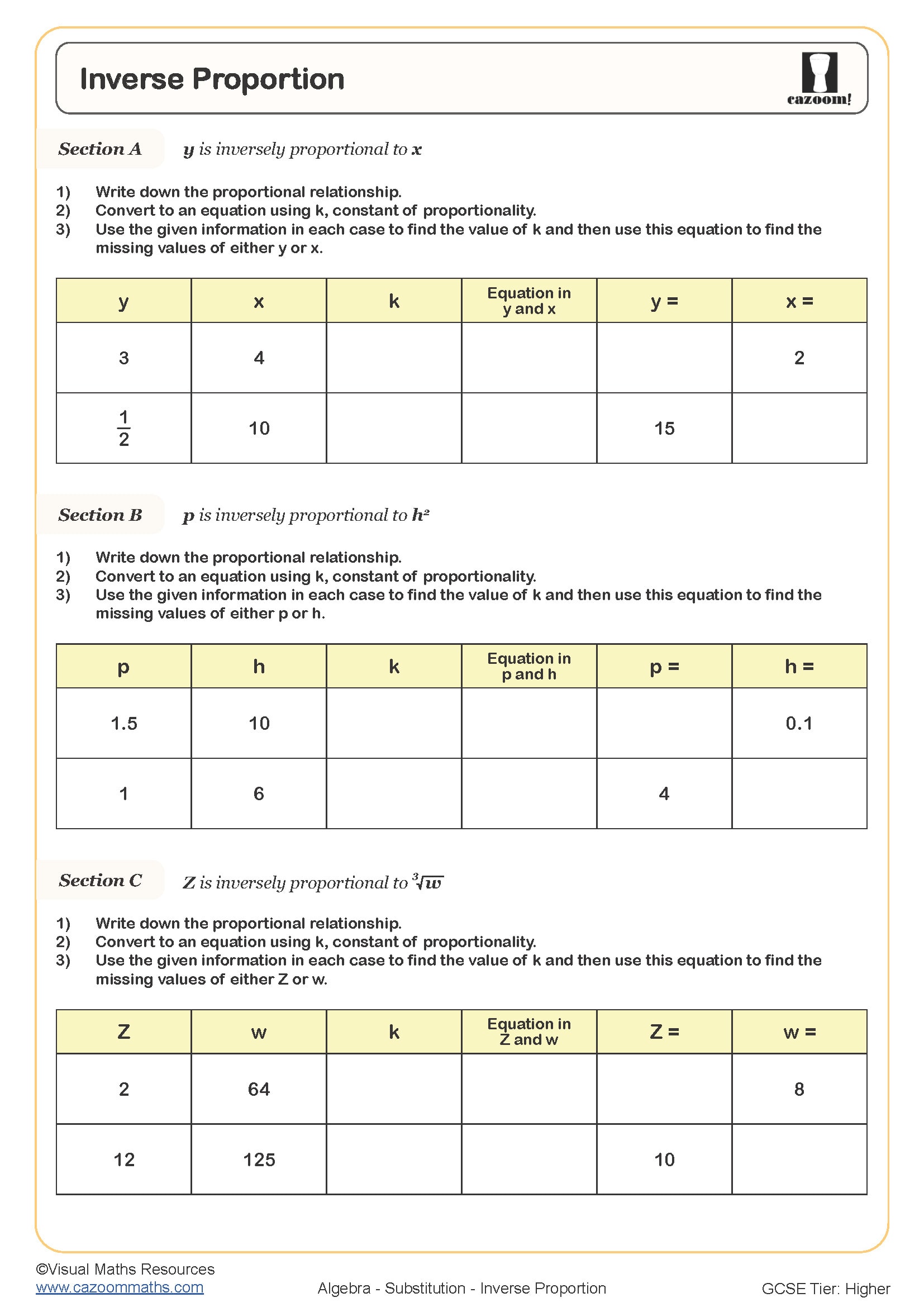
Pressure, Force and Area
Year groups: 10, 11
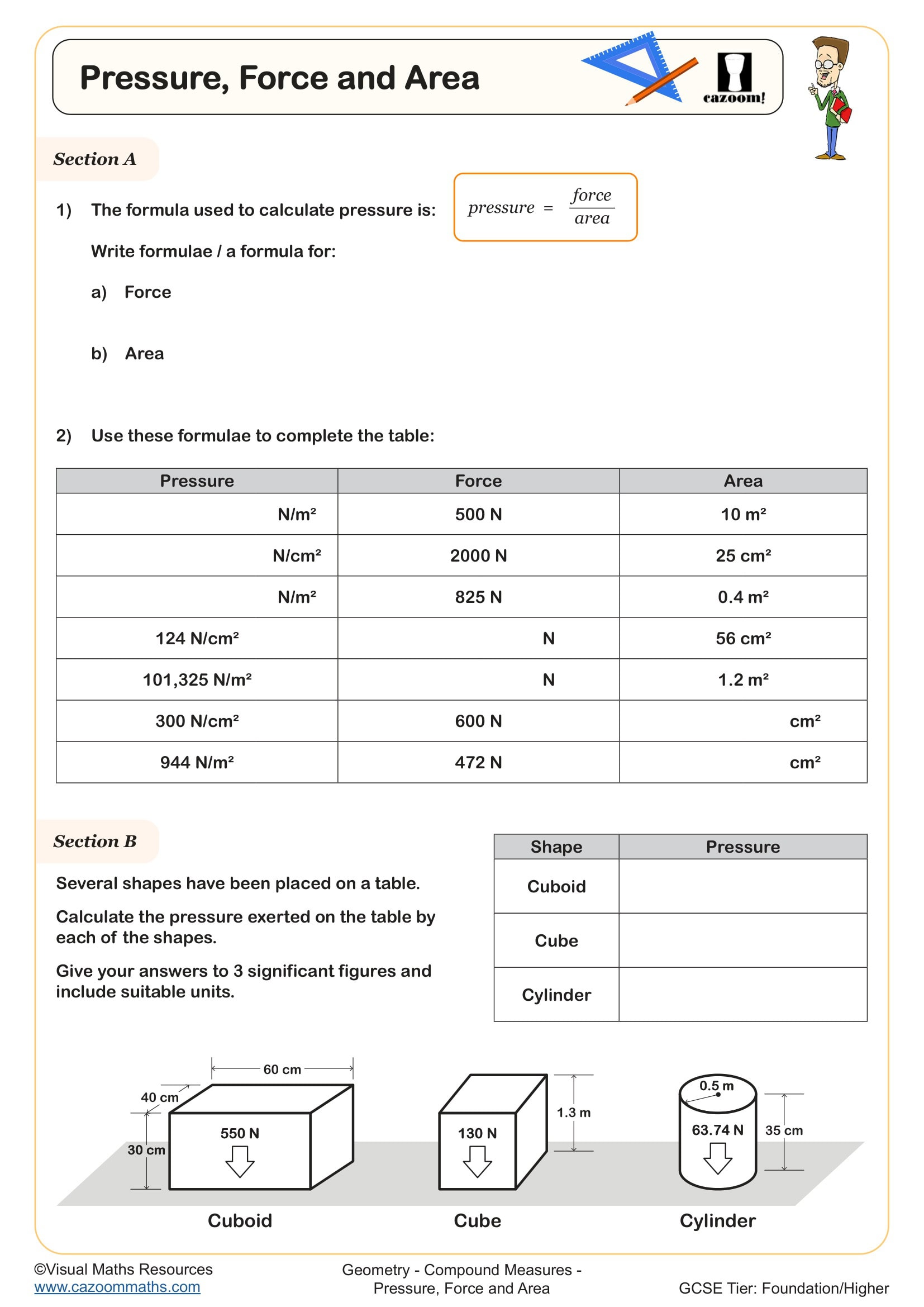
PRINTABLE PDF PROPORTION WORKSHEET WITH ANSWERS
Check out and download our Proportions Worksheets which will improve your children’s knowledge of various numerical calculations related to ratios and proportions. These worksheets are created in easy-to-download PDF format, include answers, and are designed to help your students better understand this complex mathematical topic. These Proportions worksheets are excellent resources that will make learning fun and exciting, helping young learners improve at solving various critical problems related to fractions and proportions.
What Are Proportions?
Proportions are fundamental in maths, they allow us to compare two quantities and understand their relationship. They’re a building block of ratios. Picture this, you have a recipe that asks for 2 cups of flour and 1 cup of sugar. The proportion of flour to sugar is 2:1, this shows that for every 2 cups of flour, you need to keep the ingredient ratio balanced with 1 cup of sugar. Proportions aren’t just limited to baking though, it’s used in many other real-life situations like achieving the correct mix for cooking ingredients, finding distances on maps, or solving complicated problems in science and engineering. This simple yet powerful tool helps us express relationships between quantities and makes day-to-day life easier.
Understanding The Concept Of Proportions
Understanding the basic concept of proportions is like grasping the art of balance in maths. It is basically a way to compare different quantities and discover their relationships in an easy manner. For example, imagine you have a garden with sunflowers and tulips. Now, if you count 8 sunflowers and 12 tulips, you can express the proportion of sunflowers to tulips as 8:12. This proportion can be further simplified to 2:3 when you divide both numbers by their greatest common factor, which is 4. Therefore, proportion is the core way to understand the relationship between different elements.
Use of Proportions in Real Life
Proportions are important in real-life situations, for example.
• In cooking, the idea of ratio and proportion ensures the right ingredient ratios for flavours and textures.
• In the case of map reading, proportions help us calculate accurate distances for travel planning.
• In financial calculations, this concept aids in budgeting and wise fund allocation.
• In the field of medicine, proportions determine precise drug dosages based on weight.